toys
There are millions of toys on the market. At the end of the day, you, as a parent, need to be comfortable with the toys that your child is playing with.
We believe in buying quality over quantity when it comes to toys. We like toys that will last, grow with your child, can be passed down to subsequent children, or on-sold or donated knowing that they are still intact and safe to use.
We are not fans of mass-produced, plastic or battery operated toys - these do not last, and only add to the burden on our environment when they are relegated to the rubbish tip, so you are unlikely to find any of these types of toys featured on our site. If you do want to give your children these sorts of toys, we recommend hiring them from your local toy library, rather than buying them, as you will often find them left in the corner once your child has tired of them after only a few days.
To see all of the toys we have featured, have a look at our play archives.
To ensure you are buying toys that are safe and appropriate for the age of your baby/child, please read the articles from the Ministry of Consumer Affairs and Elizabeth Pantley below.
Ministry of Consumer Affairs, December 2008
Small parts of toys pose a hazard to babies and young children – they can cut, choke, poison or strangle if they are not safe, or not used safely.
Young babies explore their world by putting things in their mouths, but children under three years of age do not have a well-developed coughing reflex and will choke easily on small items.
Always buy toys that are right for your child’s age.
Download a pdf version of this article from the Ministry of Consumer Affairs.
You may not be sure what kind of toys, or how many, you baby should have. It’s likely that you hear conflicting advice that runs from one extreme to another! It’s either: “Don’t give your baby toys he’ll be spoiled,” to “Give your baby lots of toys they develop his brain.” So…which is it?
Both sides of this debate have valid points. A baby does indeed learn from the things she plays with, and the more things she has access to, the more she can learn. With this in mind, many parents spend a fortune buying toys; however, many toys hold a child’s attention for three or four days, only to be relegated to the bottom of the toybox or back of a shelf.
Babies learn about their world by using all five of their senses: sight, hearing, taste, smell, and touch. Toys engage and refine these senses by:
Experts agree that babies need a variety of toys to enrich their lives and encourage learning. While your baby can learn from expensive store-bought toys, she can also learn from a crumpled piece of paper, a set of measuring spoons, an empty box, or a leaf. Everything is new and interesting to a baby, and if you open your eyes to the many wonders in our world, you’ll see that you don’t have to spend a fortune to keep your baby happy, interested, and learning.
definition, educational.
We believe in buying quality over quantity when it comes to toys. We like toys that will last, grow with your child, can be passed down to subsequent children, or on-sold or donated knowing that they are still intact and safe to use.
We are not fans of mass-produced, plastic or battery operated toys - these do not last, and only add to the burden on our environment when they are relegated to the rubbish tip, so you are unlikely to find any of these types of toys featured on our site. If you do want to give your children these sorts of toys, we recommend hiring them from your local toy library, rather than buying them, as you will often find them left in the corner once your child has tired of them after only a few days.
To see all of the toys we have featured, have a look at our play archives.
To ensure you are buying toys that are safe and appropriate for the age of your baby/child, please read the articles from the Ministry of Consumer Affairs and Elizabeth Pantley below.
Information from the Ministry of Consumer Affairs
Toys
Small parts of toys pose a hazard to babies and young children – they can cut, choke, poison or strangle if they are not safe, or not used safely.
Young babies explore their world by putting things in their mouths, but children under three years of age do not have a well-developed coughing reflex and will choke easily on small items.
Always buy toys that are right for your child’s age.
Safety Checklist
Remember the “Five S” guide:Size
The smaller the child, the bigger the toy. Remember that children under three put everything in their mouths, up their noses and in their ears. Also, they can’t cough things up if they are under three. So, if a toy is small enough to fit into a container the size of a film canister, or can easily break into small parts, a child under three should not be playing with it.Surface
Check that paints and fillings aren’t toxic because children can be poisoned if they lick or swallow them. Also, check that soft toys are fire resistant and that the fillings can’t come out easily and cause a child to choke on them.Strings
Check that strings or tails on toys are not long enough to cut off a child’s circulation. Also check that they are firmly attached to the toy.Supervision
Small children need close supervision with toys to help prevent accidents from happening. Remember, a supervised child is a safer child.Smooth
If toys have sharp points or rough edges a child could badly scratch or cut themselves.Choosing the right toys for their age
0-6 months
- Toys that can be chewed, sucked, and tugged
- Toys should be big enough so the baby can’t fit it all in his or her mouth
- Good choices: mobiles with interesting shapes and colours (but keep the mobile out of reach); soft toys; rattles.
6 months – 1 year
- toys that are strong, easily cleaned, and with no detachable parts
- good choices: pull and push toys, floating bath toys, large building bricks or blocks, soft toys, large soft balls, cars and lorries marked safe for under 1s.
2-3 years
toys to develop a child’s coordination- good choices: crayons, felt pens, picture books, sorting games, single musical instruments, balls, hand puppets, wheel barrows, slides, sit and ride toys.
3-5 years
- toys that are used for imaginative games
- good choices: toys to dress up, toy telephones, dolls houses, farm sets, cars, dump trucks, trains, tricycles, costumes, balls, buckets and spades, felt pens, paints, chalk and paper.
5-7 years
- toys which involve action and imagination
- good choices: skipping ropes, bikes, kites, construction sets, puppets, play sets, musical instruments, modelling materials.
7-10 years
- children follow their own interests!
Download a pdf version of this article from the Ministry of Consumer Affairs.
Information from Elizabeth Pantley
Choosing Toys for Babies
Elizabeth Pantley, author of Gentle Baby CareYou may not be sure what kind of toys, or how many, you baby should have. It’s likely that you hear conflicting advice that runs from one extreme to another! It’s either: “Don’t give your baby toys he’ll be spoiled,” to “Give your baby lots of toys they develop his brain.” So…which is it?
Both sides of this debate have valid points. A baby does indeed learn from the things she plays with, and the more things she has access to, the more she can learn. With this in mind, many parents spend a fortune buying toys; however, many toys hold a child’s attention for three or four days, only to be relegated to the bottom of the toybox or back of a shelf.
Babies learn about their world by using all five of their senses: sight, hearing, taste, smell, and touch. Toys engage and refine these senses by:
- Helping your baby learn how to control his movements and body parts
- Helping your baby figure out how things work
- Showing your baby how he can control things in his world
- Teaching your baby new ideas
- Building your baby’s muscle control, coordination, and strength
- Teaching your baby how to use his imagination
- Showing your baby how to solve simple problems
- Helping your baby learn how to play by himself
- Setting the foundation for learning how to share and cooperate
- with others
Experts agree that babies need a variety of toys to enrich their lives and encourage learning. While your baby can learn from expensive store-bought toys, she can also learn from a crumpled piece of paper, a set of measuring spoons, an empty box, or a leaf. Everything is new and interesting to a baby, and if you open your eyes to the many wonders in our world, you’ll see that you don’t have to spend a fortune to keep your baby happy, interested, and learning.
What “home-grown” toys are best?
As you view the whole world as a bottomless toybox, here are some tips to consider:- Search for items of different weights, materials, textures, flexibility, sizes, shapes, colors, and smells. (Most store-bought baby toys are primary-colored plastic; that’s why your metal keys on a leather key ring are so very appealing they’re different!)
- Babies are generalists. Your little one will apply what he learns from one object to any other that is similar. Therefore, don’t give him an old book or magazine to scribble in unless you want all of your books to be potential notepads. A sealed bottle may look fun, but your baby may then think he can play with your pill bottles.
- Take a closer look at the things you consider “trash.” Some may be valuable toys! Empty boxes, egg cartons, and tin containers are just a few examples of everyday castoffs that, once cleaned, can provide endless hours of play.
- Your kitchen is overflowing with baby toys! Once your little one begins to crawl, it’s time to rearrange the kitchen. Put all your baby-safe items, such as plastic containers, pots and pans, potholders and canned goods, in your lower cabinets and let your baby know where his “toys” are. You’ll have to relax your housekeeping standards and deal with disorganized cabinets for a while, but the play potential is so fantastic that it’s worth it!
- Young children love water play, and a bowl or pan of water along with spoons and cups of various sizes make a fabulous source of fun. You can put your baby in his high chair, sit him on the floor on a beach towel, or take him outside in a shady spot if the weather’s warm. I guarantee he’ll be soaked when he’s one, but that will be after a very long and happy play session.
- Containers to fill and empty are lots of fun for a baby. You can safely fulfill your older baby’s desire to manipulate small things by filling a large bowl with a variety of colorful children’s cereals (nothing hard or ball-shaped) and supplying spoons, measuring cups, and other containers. Since you’re using cereal pieces, it’s okay if some end up in his mouth. Don’t try this with beads, seeds, macaroni, or other items that pose a choking hazard.
What store-bought toys are best?
A while ago, I went to the toy store to buy my youngest child, Coleton, a toy that my older three adored when they were babies. It was a simple pop-up toy for toddlers with various buttons, levers, and dials. I found a bewildering variety of this kind of toy, but to my dismay, every single one was electronic. They made sounds,they made music, they had blinking lights they just about played by themselves! I finally had to order the prized toy from a specialty catalog that carries “back to basics” toys. Sure, electronic toys can be exciting for a while but they can also stunt your baby’s developing ability to imagine and manipulate (and let’s face it: those repetitive electronic sounds can get annoying). If a toy does everything by itself, it loses its potential as a tool for developing creativity. Also, if your little one gets used to these toys, then simple pleasures like wooden blocks seem boring by comparison because he expects the blocks to play for him. And those simple toys are among the very best for baby playtime.Look for these qualities as you shop for your baby:
- Long-term play value: Will this hold your little one’s attention for more than a few weeks?
- Durability: Will it hold up when sat on, thrown, jumped on, mouthed, or banged?
- Solid simplicity: Babies don’t need complicated toys.
- Challenge: Look for toys that teach but do not frustrate.
- Appropriateness. Does it match your baby’s thinking, language, and motor skills?
- Interest: Will it encourage your baby to think?
- Stimulation: How does this toy foster creativity and imagination?
- Interactiveness: Does it engage your child or just entertain him as he watches passively?
- Versatility: Can your baby play with this in more than one way?
- Washability: Well-loved toys tend to get very dirty!
- Fit with your family value system: Does this toy reflect your family’s particular values? For example, is the toy friendly to the environment? Does it promote diversity? Are you comfortable with what the toy represents?
- Novelty: Is this toy different from others your baby already has? You don’t want a toy box filled with 30 different kinds of rattles!
- Fun appeal: Is it something that you will enjoy playing with, too? Toys that encourage you to play along with your baby are ideal.
Best toys for young babies:
- Board books
- Foot or hand puppets
- Musical toys
- Rattles
- Small, lightweight, easy-to-grasp toys
- Squeaky toys
- Teething rings
- Toys with high-contrast graphics, bright colors, or black and white patterns
Best toys for older babies:
- Activity boxes (levers/buttons/dials/hinges)
- Balls
- Beginning puzzles (two or three large pieces; knobs are helpful)
- Blocks
- Cars and trucks
- Chunky small people and accessories
- Dolls and stuffed animals
- Hammering toys
- Large interlocking beads
- Modeling dough
- Musical toys
- Nesting cups
- Peg boards
- Picture books
- Plastic animals
- Pop-up toys
- Push or pull toys
- Shape sorters
- Stacking rings
- Toy versions of everyday items (telephones, cooking utensils, doctor kits)
- Toys you still remember from your childhood (The classics endure and are always a good bet!)
- Washable crayons or markers and blank paper
Playtime
As you give you baby new things to play with, keep in mind that there is no right way to play with toys. For example, a puzzle is not always for “puzzling.” The pieces make great manipulative characters, can be sorted or put in boxes, and make interesting noises when banged together or against an empty pot. Children learn through play, so any toy they enjoy playing with is, bydefinition, educational.
Safety for all toys
Always consider well the safety aspects of anything your baby is going to play with. Here are a few ways to keep playtime safe:- Discard any plastic wrapping, plastic bags, packaging, or tags before giving a toy to a baby.
- Always watch for choking hazards. Anything small enough to fit in your baby’s mouth has the potential for danger. Watch for pieces that may become loose from a larger object, too. Make sure that no small parts can be pulled off or chewed off the toy.
- Check the paint or finish on the toy to make sure it is non-toxic, since babies put everything in their mouths.
- Check toys for sharp points, rough edges, rust, and broken parts.
- Always abide by the age rating on the package. No matter how smart your child is or how wonderful the toy, don’t second-guess the manufacturer, since age rankings often are given due to safety issues. If you choose to purchase a toy with an older age recommendation, make certain that the toy is used only when you are playing with your baby, and that it is stored where your
- baby can’t get to it without your supervision.
- Remove rattles, squeeze toys, teethers, stuffed animals, and other small toys from the crib or bed when your baby goes to sleep for naps or bedtime. The exception here is a specialty made-for-baby toy that has been carefully created to be a safe sleeping lovey.
- Avoid pull toys with long cords that could wind around your baby’s neck. Pull toys for babies should have either very short strings or rigid handles.
- Make sure toys are properly assembled, with no loose parts.
- Beware of excessively loud toys. Babies tend to hold things close to their faces, and you want to protect your baby’s sensitive ears.
- Buy mobiles or crib toys from reputable manufacturers, and make sure that they attach to the crib without dangling strings. Remove mobiles and other crib toys once your baby can sit up.
- Make sure that toys are never left on stairs, in doorways, or in walkways.
- Your baby’s toybox should have a special safety lid (or no lid at all) to prevent it from slamming on your baby’s head or hands, or trapping your baby inside. There shouldn’t be any hinges that could pinch little fingers.
- Never give a baby a balloon, Styrofoam, or plastic wrap as a toy; these present a serious choking hazard, since they cannot be expelled using the Heimlich maneuver.
- If a toy is second-hand (whether purchased from a second-hand store or garage sale, or given to you by a friend or relative), give all of the above rules extra consideration. If you have any doubts, always err on the side of safety and discard the toy. Don’t let your baby play with a paint-finished toy that appears to be older than a few years the paint may be lead-based, which poses serious hazards to a baby who touches or mouths it.
- Keep toys (and parts of toys) designed for older children out of the hands of babies. Your baby may like to play with toys belonging to an older sibling or friend, but these are geared, safety-wise, to older kids and are not safe for little ones to use without very close supervision.
advertisements
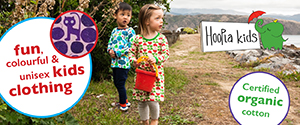
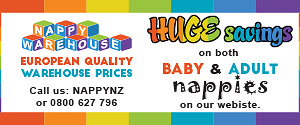
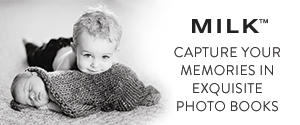

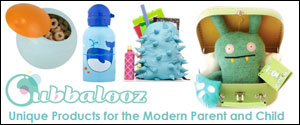
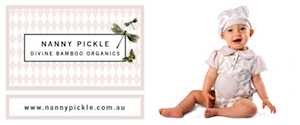
| 1. On the go accessories for school and preschool - these will make your child's school day! 2. Kid's bedroom art ideas - brighten up their spaces 3. How to dress your child for a special occasion 4. Frozen party - Gorgeous but manageable ideas for your Disney Frozen fan 5. Creamy Harissa Slow Cooked Beef - This recipe is warming and creamy. |
|
|
| 1. Flying with kids - How do the words “airplane flight” and “children” make you feel?... 2. Horse Party - ultimate horse themed party. 3. Toddlers - Living with little people: patience and understanding required! 4. Lalaloopsy party - How to craft your party around a centrepiece 5. Superkids scroggin - An innovative lunchbox idea |
|
|
| 1. Scone peapods - the cutest and most delicious vegetables around 2. Witchery Kids Clothing - with their fun blog showing the clothes in action! 3. Baby Clothes - Upcycled keepsakes. 4. Horse Party - ultimate horse themed party. 5. Best indoor playsets - Unbelievable fun most of us can only dream of! |





